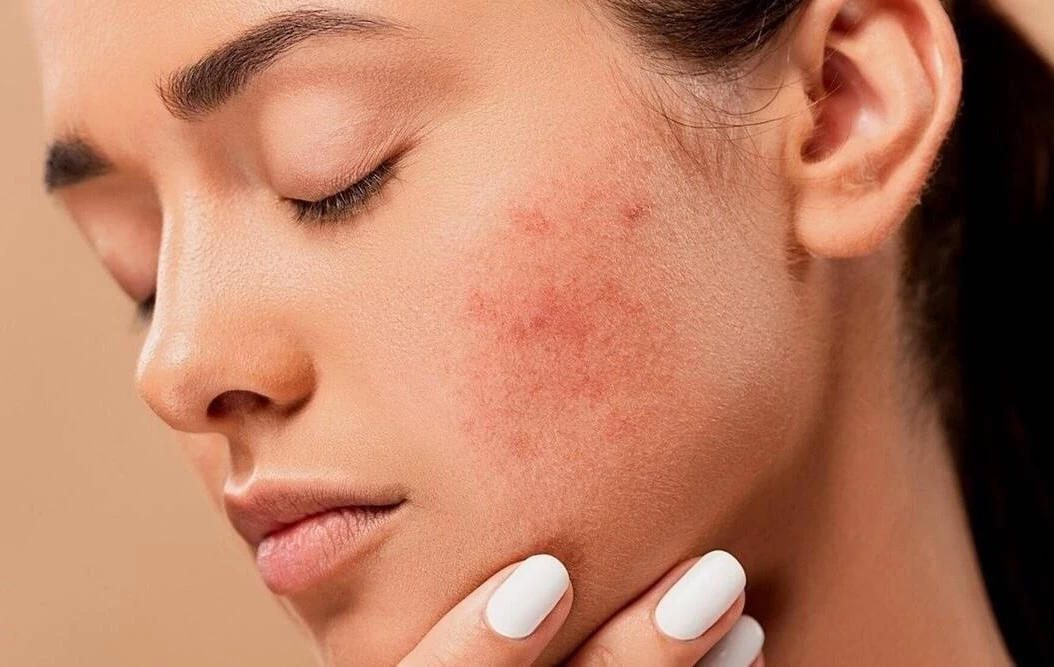

Redness Treatment
Redness of the skin is a common dermatological issue that many people—especially those with sensitive skin—face. This redness may result from several causes, such as prolonged exposure to direct sunlight, using unsuitable products, or suffering from inflammatory conditions like eczema or rosacea. Although in some cases it’s temporary and subsides quickly, persistent redness may indicate a deeper issue requiring attention and care. In this article, we explore the main causes of skin redness and offer effective tips and treatments to help soothe the skin and restore its radiance and health naturally and safely.
We will explain the causes of redness and how to implement effective treatment of redness on the skin.
Causes of Skin Redness
Excessive Sun Exposure
Strong ultraviolet rays damage the skin’s surface, weakening its cells and causing redness, warmth, and a burning sensation. Therefore, protecting from the sun is a vital first step in any treatment of redness plan triggered by sun exposure. It is recommended to use a high-SPF sunscreen and avoid peak sun hours. After sun exposure, soothing creams containing aloe vera or panthenol can help calm the skin and accelerate the treatment of redness.
Using Unsuitable Products
Some cosmetics or skincare products irritate sensitive or dry skin, leading to annoying redness. Harsh chemicals, strong fragrances, or synthetic additives may be too aggressive. Avoiding inappropriate products is fundamental to treatment of redness caused by chemical irritation. A gentle, simplified routine with medical-grade moisturizers free of fragrances and dyes is advised to ensure safe and effective treatment of redness.
Harsh Weather Changes
Transitioning from cold to warm environments—or vice versa—can shock the skin, dilating blood vessels and triggering redness. Cold wind and dry air strip natural moisture. Using a protective moisturizer during climate shifts forms part of a treatment of redness routine driven by environmental changes. Regular moisturizing and using a humidifier indoors help maintain skin balance and reduce redness. These natural solutions support treatment of redness without needing medication.
Chronic Skin Conditions like Rosacea or Eczema
Persistent redness accompanied by itching or burning in areas like cheeks or nose often indicates chronic conditions such as rosacea or eczema. In such cases, topical care alone isn’t enough—consultation with a dermatologist is necessary to tailor the appropriate treatment of redness strategy. Diagnosis is essential for an effective plan addressing underlying conditions. This may include anti-inflammatory creams or oral medications depending on severity.
Food or Drug Allergies
Some foods or medications can trigger allergic reactions, resulting in sudden redness, sometimes with swelling or itching. Paying attention to the body’s reactions when trying new items is important. If redness appears, stop use immediately and consult a doctor. In such cases, treatment of redness may involve antihistamines or soothing creams to quickly alleviate symptoms. Identifying and avoiding triggers is key to long-term success in treatment of redness.
Treatment of Redness
Regular Moisturizing with Soothing Products
One of the most important steps in treatment of redness is restoring the skin’s barrier and calming irritation with moisturizers. Opt for creams with natural ingredients like aloe vera, shea butter, or panthenol, which reduce inflammation and provide immediate relief. Use them twice daily after gently cleansing the face, avoiding products with fragrance or alcohol. Consistent moisturizing forms the foundation of an effective treatment of redness, especially for dry or sensitive skin.
Cold Compresses to Calm Irritation
Cold compresses are one of the simplest and fastest methods to lower the temperature of irritated skin and reduce redness. Soak a clean cloth in cold water, apply gently to your face for 10–15 minutes to constrict dilated blood vessels and alleviate burning. This method supports treatment of redness, especially after sun exposure or temporary irritation. Avoid direct ice to prevent worsening irritation or skin damage.
Avoid Daily Redness Triggers
A crucial component in successful treatment of redness is avoiding its triggers—such as sun exposure without protection, unsuitable products, or vigorous scrubbing. Stress and anxiety also contribute to skin redness, so maintaining a calm, balanced lifestyle helps improve skin condition. Avoiding these triggers makes your treatment of redness routine more effective and reduces symptom recurrence.
Use Products Designed for Sensitive Skin
Sensitive skin requires special care when choosing makeup or cleansers. Opt for products labeled “for sensitive skin” or “hypoallergenic,” which are free from irritating agents. Daily use of such products helps soothe the skin, reduce inflammation, and reinforce your treatment of redness long-term. Always patch-test new products on a small area before applying them to your entire face to avoid negative reactions.
Consult a Dermatologist for Persistent Cases
In some situations, treatment of redness isn’t straightforward and requires medical intervention—especially if redness persists, is accompanied by severe itching, flaking, or swelling. Seeing a dermatologist is essential to diagnose whether the cause is allergy, infection, or a condition like rosacea or eczema. The specialist may prescribe topical corticosteroids or oral medications depending on the case. Professional follow-up ensures a treatment of redness plan based on accurate diagnosis, speeding recovery and preventing complications.
FAQs – Treatment of Redness in the Skin
Can redness be treated at home?
Yes—home remedies like cold compresses, soothing fragrance‑free moisturizers, and avoiding triggers can initiate treatment of redness. However, if redness persists or worsens, consult a specialist.
What natural ingredients help in treating redness?
Top picks include aloe vera gel, coconut oil, cucumber, and green tea—all known for soothing and anti-inflammatory properties, making them useful in treatment of redness.
Is sunscreen important for redness treatment?
Absolutely—regular sunscreen use is a cornerstone of treatment of redness since sun exposure worsens irritation. Choose sunscreens formulated for sensitive skin and free of harsh chemicals.
Can redness from allergy be treated?
Yes—but first identify and avoid the triggering allergen. Treatment often includes antihistamine creams or corticosteroids prescribed by a doctor, alongside continuous use of gentle moisturizers as part of treatment of redness.
When should I see a doctor?
If redness lasts more than a week or includes symptoms like intense itching, flaking, or swelling, immediate dermatologist consultation is advised. Prompt intervention helps ensure a successful treatment of redness outcome.
In Conclusion
Redness treatment is essential for maintaining healthy, comfortable skin, especially given the various triggers that can irritate it. Choosing appropriate products, avoiding harmful practices, staying hydrated, and protecting your skin from the sun are all critical. If redness persists or worsens, medical consultation is the safest route to ensure effective and secure treatment of redness. Healthy skin starts with mindful, consistent care.
News & Related Articles




